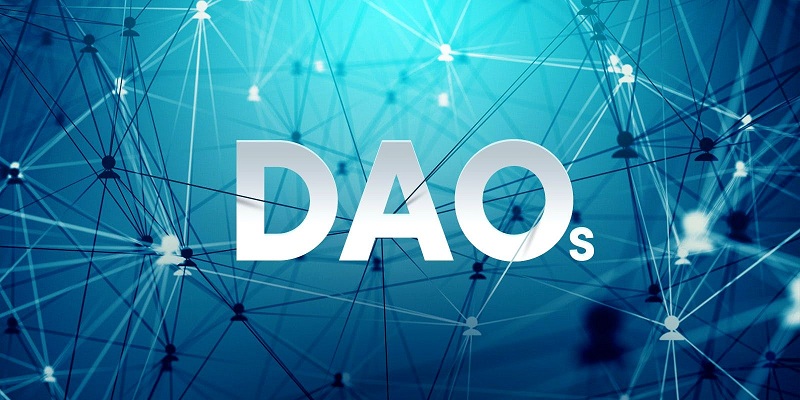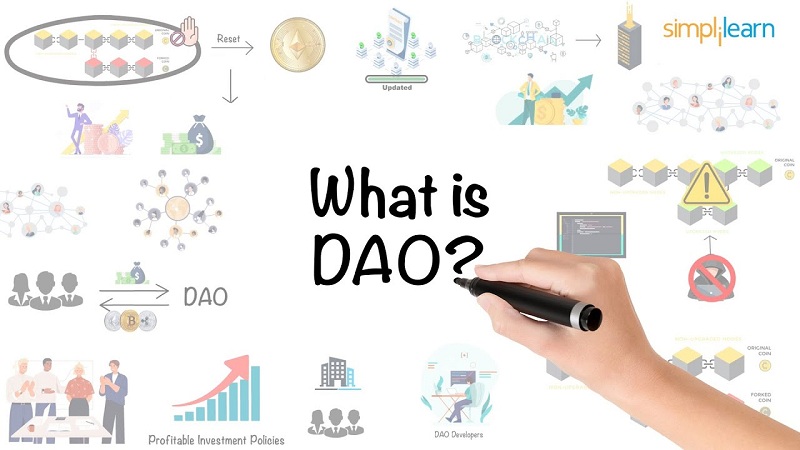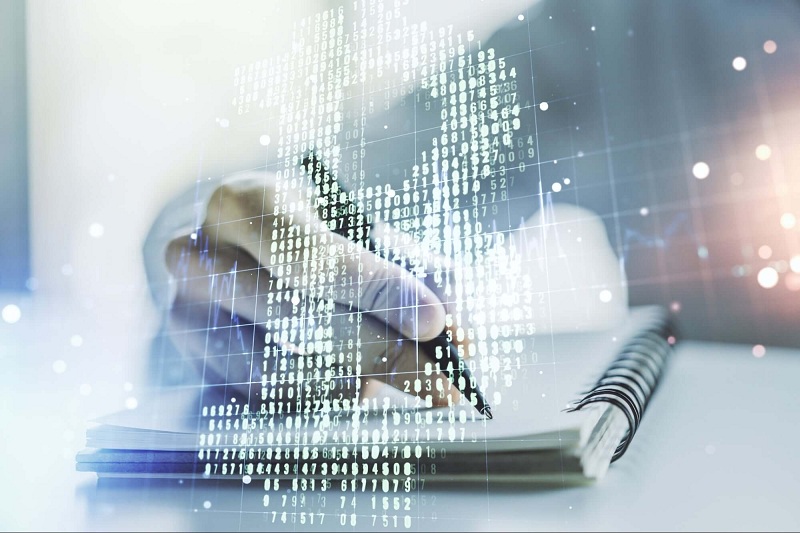Imagine a classroom beyond walls, where learning and teaching merge with cutting-edge tech. That’s exactly The role of DAOs (Decentralized Autonomous Organizations) in education. It’s not sci-fi; it’s the here and now, radically shaping our grasp on knowledge. DAOs ditch the old school playbook, paving the way for a future where everyone has a say in what and how we learn. Join me as we dive into the decentralized revolution scaling the walls of the ivory towers. My mission? To show how DAOs are not just a fad but a mighty force reinventing our educational landscape, for good.
The Evolution of Educational Systems with DAOs
Transitioning to Decentralized Education Models
We’re seeing education shake hands with tech in cool ways. DAOs, short for Decentralized Autonomous Organizations, are now in this mix. They’re changing how we learn and teach. Imagine a school run by its teachers, students, and staff—not just the top boss. This is what DAOs offer: a community-driven way to manage schools.
In a world of DAOs, every voice matters. Teachers and students can vote on important stuff, like what classes to offer. This is part of decentralized education models. These models give power back to the people in the school. And they’re fair: one person equals one vote.
DAOs in educational initiatives are growing. Schools are looking at DAOs to help with decisions. It’s like having a big group project, where everyone gets a say. That makes people feel valued. And when people feel valued, they do their best.
Blockchain technology is key here. It stores votes and decisions safely. Nobody can mess with them once they’re made.
The Integration of Blockchain Technology in Schools
Now, let’s get into blockchain technology in schools. It’s like a digital Lego set. Every block has info that connects to the next block. And once built, you can’t take it apart without everyone seeing. Schools use this to keep records safe and sound.
Smart contracts for educational content are another cool part of this. They’re like deals that run themselves when certain things happen. If a student turns in homework, they might get a digital token. This token economy in education rewards hard work right away.
Educational resource distribution via DAOs is also getting a boost. Say a school wants to buy new computers. Instead of waiting on red tape, a DAO can act fast. Everyone in the DAO can say, “Yes, let’s do it,” and it’s done.
So, my friends, DAOs are much more than a tech trend. They’re a fresh way for schools to work. They’re about making sure everyone’s heard. And they’re about using tech to keep everything fair and open.
That’s the power of blockchain and DAOs. They’re not just changing how we handle money or business. They’re reshaping how we learn. And that’s a future I can’t wait to see unfold.
DAOs at the Forefront of Educational Innovation
Developing Smart Contracts for Educational Content
Let’s talk about smart contracts made just for learning. These are like deals that run themselves. They check if you did your study job and then give you rewards. No need for a middle person! Smart contracts make sure everyone gets what they earned. Teachers can take heart; this tech makes sharing knowledge fair and square. It’s clear: smart contracts can change schools big time.
Blockchain tech makes this happen. It lets us track who does what in school. This means no more guessing if someone did their homework. You do your work, and the blockchain knows it. It’s a trusty list that never lies. Students and teachers can both smile. No one can say you didn’t do your task.
The Emergence of DAO-Funded Scholarships and Resources
Now, let’s dive into DAOs that help with school money. Imagine a jar where everyone adds coins for scholarships. DAOs can be that jar. They collect cash from folks who care about education. Then they give it to learners who need it. Just think – no big forms to fill out, no long waits. If you deserve it, DAOs can help you get that school seat.
This isn’t just about cash for school. DAOs also share books and tools to help kids learn more. Picture a library that’s run by everyone who uses it. You pick what books it should have. It’s a place built by all, for all. This means less worry about budgets or unfair ways. More kids with books in their hands – that’s the win.
Remember, DAOs aren’t just a fad. They bring new ways for kids to learn and grow. Schools become places where everyone has a say. Kids can now have a hand in creating their own future. It’s big – a change that lets every voice be heard. Education is not just about what we learn, but how we learn it, together.
Cultivating Collaborative Educational Environments
Advancing Peer-to-Peer Learning Through DAOs
DAOs are changing how we learn from each other. Think of a DAO as a group run by rules everyone in the group agrees on. No one person calls the shots. DAOs are popping up in schools too. This means more say for both teachers and students in how things work.
What’s key about DAOs in education? They bring everyone together. Students can teach and learn from each other. Say, you’re good at math, and I rock at history. Through a DAO, we swap what we know, no middleman needed. This type of swap is called peer-to-peer learning, made simpler with DAOs.
Blockchain is the tech under DAOs. It’s like a digital ledger that is tough to mess with, which means when I teach you something or you teach me, it’s recorded fairly. Trust is huge in learning, and DAOs build that with blockchain. Tokens come into play too. Do well in teaching or learning, and you earn these digital rewards.
Now, imagine creating a project together. Smart contracts on blockchain make it safe and fair. These contracts are like deals we make, but tech makes sure we follow through. Share your work, get my feedback, all recorded on the blockchain.
DAOs turn solo learning into a team sport. We form groups, tackle problems, and build trust — all with tech backing it up. This way, learning gets a fresh, fun twist.
Fostering Educator Collaboration Within DAO Frameworks
Imagine teacher teamwork on steroids. That’s what DAOs can do. They help teachers get together to make learning better. How’s that? Let’s dive in.
DAOs give tools for teachers to share ideas fast — no waiting, no red tape. Got a lesson plan that rocks? Share it on the DAO. Another teacher can try it out the next day. This is teamwork made easy.
Also, with DAOs, we can all say how things should work. If a bunch of us think something should change, we can make it happen. This is having real power in what we do. It’s a big deal in schools where often just a few make all the decisions.
When teachers from all over put their minds together, they dream up amazing things. Lessons get better. Kids get stoked to learn. And everyone has each other’s back. That’s education governance through DAOs. It’s all about sharing what we know and making choices together.
Educators used to work in their own small worlds. Now, with DAOs, those worlds connect. We get this vast pool of knowledge that’s always growing. DAOs aren’t just a tech thing. They’re a people thing, bringing us closer, making us smarter. And you know what? This is only the start.
Democratizing Education Through DAOs
Promoting Decentralized Decision-Making in Academia
In schools, we often see decisions made at the top. They trickle down, affecting everyone, from students to teachers. But, what if we changed this? What if the very people who are part of learning—students, teachers, and staff—got to make the big choices together?
Here’s where DAOs in educational initiatives step in. DAO stands for Decentralized Autonomous Organization. It’s a fancy phrase, but it boils down to this: a group making decisions in a fair way, powered by blockchain technology in schools. This is the idea of decentralized education models.
In this setting, peer-to-peer learning DAOs and student-led groups shine. They make choices about classes and school rules, guided by what’s good for everyone, not just a few. It means everyone has a say and can see how decisions happen. It’s total openness in education governance through DAOs.
Let’s say there’s a new topic a bunch of kids want to study. Instead of hoping someone up high says ‘yes,’ a DAO lets students and teachers work on it, right away. That’s decentralized decision-making in academia.
Implementing Token-Based Incentives and Governance
Now, how do DAOs keep things fair and get jobs done? They use tokens—kind of like gold stars in class, but way cooler.
Token economy in education works like this: you do a task or share a great idea, and you get tokens. These aren’t just any tokens—they hold power. Collect enough, and you can help decide new rules or what projects get picked.
It’s not just about being boss. These tokens and smart contracts for educational content set up a system where doing good means getting to shape the world around you. Think about it; a teacher has an awesome class project. With token-based incentives for teachers, they share it and get tokens. Then, they use those to vote on new methods or tools they need.
It’s real action, right now. And it’s not only teachers who can make waves. Kids with enough tokens can vote on things like starting a club or getting a new book in the library.
Plus, imagine getting a scholarship not because of a single person saying ‘yes,’ but because a whole community of folks thinks you’re the bee’s knees, thanks to DAOs funding scholarships. That’s the power of blockchain-managed educational resources.
We’re not just talking. This stuff is happening. More schools and students are diving into DAO-driven educational platforms every day. They show us that when we join forces, cool things happen.
Kids and grown-ups, side by side, deciding how to learn and teach—right in the heart of their classrooms and on their screens. That’s what DAOs bring to the table. It’s big, it’s bold, and it’s flipping the script on learning.
Learning and teaching are transforming before our eyes, with every vote, every token, and every shared decision. And that’s a lesson worth taking to heart.
We’ve explored how DAOs are shaping the future of learning. We dove into how education is adapting to decentralized models and how blockchain tech is entering classrooms. Smart contracts are now creating unique educational content, with DAOs even funding scholarships. We’ve seen how these systems promote peer learning and support teachers working together.
These innovations in DAOs are truly democratizing education. They give students and educators alike a voice in decision-making. They also offer new ways to reward participation in academia. This shift to inclusive, collaborative learning environments is a big win for everyone.
To wrap it up, DAOs are not just tech trends. They are the tools that might just redefine our entire educational landscape. Thanks for joining me on this journey into the world of DAOs in education. Let’s keep our eyes on these changes. They’re making learning better for us all.
Q&A :
How do DAOs impact the educational sector?
Decentralized Autonomous Organizations (DAOs) can significantly impact education by promoting decentralized decision-making, enhancing transparency, and enabling collective governance of educational institutions. They can also facilitate crowdfunding for educational projects and democratize the learning process, removing barriers and central points of control.
What are the potential benefits of integrating DAOs into education?
Integrating DAOs into education systems offers a number of potential benefits. These include more democratic governance structures, where students, teachers, and stakeholders have a voice in decision-making. Also, because DAOs operate on blockchain technology, they ensure transparency and accountability in financial transactions and administrative processes. Lastly, DAOs can potentially increase access to education by lowering costs and creating global learning communities.
Can DAOs influence the way educational content is created and shared?
Yes, DAOs can have a considerable influence on the creation and distribution of educational content. By leveraging the power of the community and using smart contracts, educators and content creators can be rewarded directly for their contributions, incentivizing high-quality content creation. DAOs can also facilitate a more open and collaborative approach to content development, where users can vote on curriculum changes or new course offerings.
How do DAOs ensure transparency and trust in educational administration?
Transparency and trust are core principles of DAOs, achieved through the immutable recording of transactions and decisions on a blockchain. In an educational context, this means that financial dealings, such as fund allocation, donor contributions, and resource distribution, are all verifiable on the public ledger. Moreover, the voting process for decision-making in a DAO is transparent, with every member having a clear understanding of how choices are made.
Are there examples of DAOs successfully operating in the education domain?
While the concept is still relatively new, there are emerging examples of DAOs being used within the educational domain. Some initiatives aim to create decentralized learning platforms governed by DAOs, while others focus on research funding and publication. For instance, BitDegree has employed blockchain to revolutionize how education and tech talents are connected, and platforms like EdDAO are seeking to create a new funding mechanism for educational content creation.


